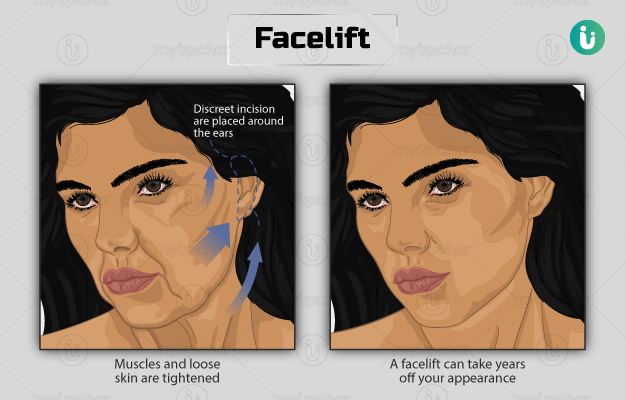Summary
A facelift is a surgery that can be performed in both men and women to correct the features of ageing such as wrinkles and loose and sagging skin on the face. The procedure is not recommended to those who have poor health or who smoke heavily. In a consultation before the surgery, the doctor will take your complete medical history and will examine the skin on your face and neck. They may also take some pictures to compare the effect of surgery. The procedure takes about two to four hours. You may need to have pain medication after the surgery. Your doctor will ask you to keep the surgical wound clean and avoid any vigorous activities for a while after the procedure.
The operation has a few risks such as infection, nerve damage, and scarring. Your follow-up will be in one to two weeks; however, you should contact the doctor immediately if you have symptoms such as fever, excessive swelling, or bleeding.






































